
American Workhorse - Part 1: Minimizing Chassis Flex
As a proud American company, Mishimoto is dedicated to supporting our workforce and ensuring that, from a vehicular perspective, we've got the best tools possible to stay tough and work hard. That's why we've been hard at work developing a sturdy, heavy-duty upper radiator support bar for the Ford 6.4L Powerstroke truck in hopes that it can still live up to its reputation as the workhorse of America.
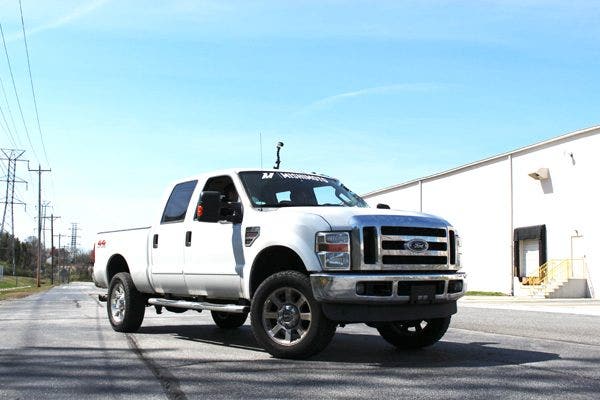
A View From Above
Industry, manufacturing, and innovation are the driving forces that made our United States of America so grand. Hard work, great design, and our invaluable freedom to innovate planted the seeds that sprouted into our wonderfully advanced society. There is, perhaps, no better place to observe the fruits of our industrial and technological prowess than from the top of a skyscraper, gazing upon the furthest reaches of our developed urban expanse. These myriad buildings are monuments to the hardworking Americans who built the foundations of our country literally from the ground up.
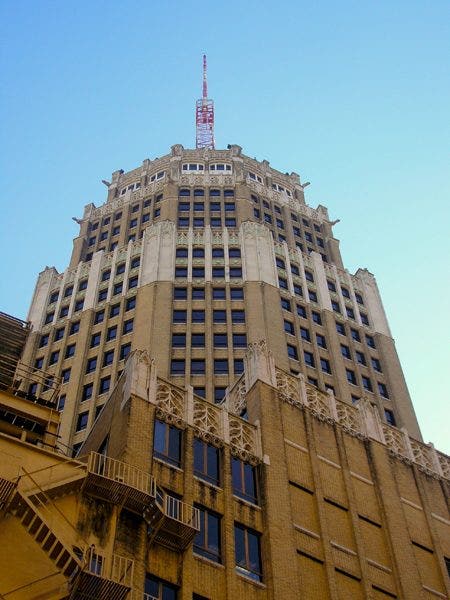
For those unaccustomed to the experience, there is also something uniquely unsettling about finding yourself high above the earth in a large structure and feeling the building ebb and sway beneath your feet. People often hold the perception that large objects, with their unwavering and steadfast presence, are completely rigid. It's hard to imagine movement and flex in something that seems necessarily so solid, but in fact, large objects are often even more prone to structural flexing than smaller ones, due to their increased mass. And, in fact, this can be an intentional design feature.
"there are numerous systems, structurally bound to the truck's frame, that lack the inherent ability to absorb the forces of torque they experience without the risk of damage or accelerated wear."
In the case of a building, the flex is necessary; it allows the structure to absorb and withstand the forces and impacts enacted upon it by subtle ground movements, wind, and other factors. By flexing and bending, the building can mitigate external torque and continue to stand proud and strong.
Implications of Front-End Flex
In the front of your Ford Super Duty 6.4L Powerstroke truck, a vital tool itself in continuing the tradition of American engineering and hard work, flex can have some unfortunate consequences. In a skyscraper, flexibility is engineered into the skeletal structure of the building. It's supposed to happen. While this is true to some degree in the context of a vehicle, it presents problems in the 6.4 when it occurs in places where it shouldn't.
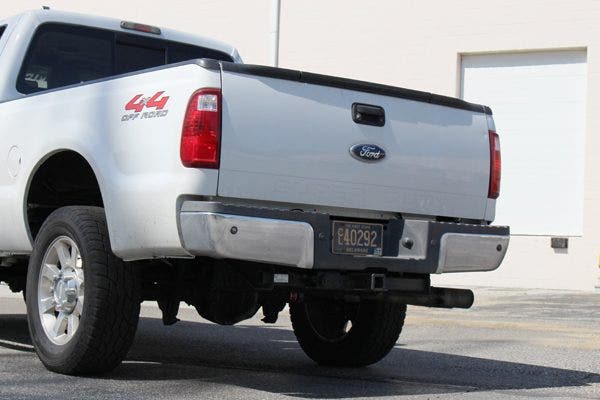
Some degree of malleability and flex is necessary in a truck, but not in places where the components that incur such externalities are not designed to withstand those conditions. For example, when the front end of your Super Duty truck experiences unwanted chassis flex, there are numerous systems, structurally bound to the truck's frame, that lack the inherent ability to absorb the forces of torque they experience without the risk of damage or accelerated wear.
In the F-Series 6.4L Powerstroke trucks, the cooling system is a good example of this. Therefore, minimizing unwanted chassis flexing in places where it shouldn't occur helps to mitigate stress on various components of the vehicle, including the cooling system.
How Flex Occurs
Every time your truck encounters a bump in the road, the force of the impact is largely absorbed by the suspension system. However, any impact that can't be fully attenuated by the springs is transferred to the truck's chassis. Furthermore, if one side of the vehicle experiences an impact that isn't equal to the impact on the other side, the force is not evenly distributed across the truck's chassis, causing the twist or flex I've been referring to as one side experiences a larger impact than the other.
When you think of chassis flex, you might imagine that such a thing could only occur upon encountering a severe obstacle like a speed bump or a pothole. It is important to understand, however, that this is a much more regular occurrence than you might imagine. Even a small bump at highway speeds, varying in magnitude from one side to the other and experienced by a somewhat massive vehicle like the Super Duty, can mean a large amount of force imparted on the chassis. As we already established, chassis flex itself isn't inherently bad, but when it affects things that aren't designed to flex - that's bad.
Take a look at this animation to get a better idea of how normal impacts affect your truck's front end. With the Mishimoto upper radiator support bar, the added support and rigidity will minimize front-end chassis flexing by up to 28%.
Other Issues
Ford's impressive Powerstroke diesels are torque monsters, and the 6.4L is no exception. However, just as the structure of a building flexes to mitigate external torque, the structure of an F-Series Super Duty truck flexes and mitigates torque. In a building, we want to keep external torque from affecting the internal construction. But in a truck, it's the opposite - we want to impart torque from within onto the external environment. By flexing, the chassis is mitigating the truck's ability to do that efficiently.

The Mishimoto upper radiator support bar - Much beefier than the stock support.
Now, let's be honest - we're not talking about a groundbreaking difference in torque here, but making your truck more rigid has a multitude of other benefits. Tightening up the chassis facilitates more direct handling response, and minimizing front-end flex helps to keep your truck on the road longer, as we established earlier.
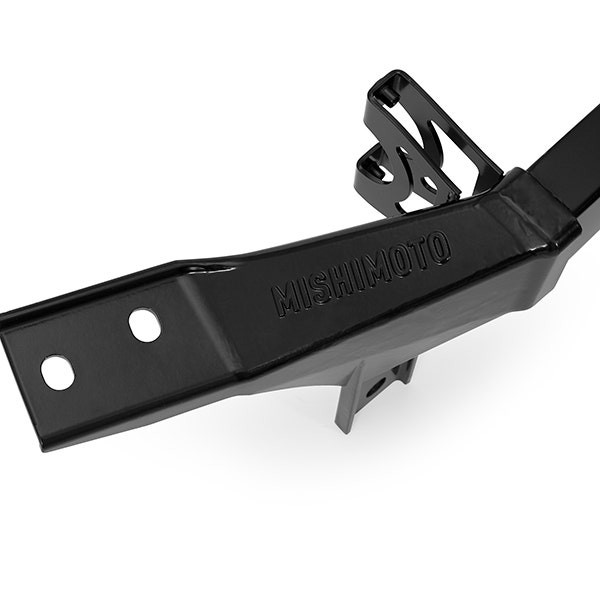
This overall toughness improves the durability and resilience of your truck, and can improve the truck's ability to withstand abuse from road forces and bumps. And it looks pretty damn cool as well, if we do say so ourselves.
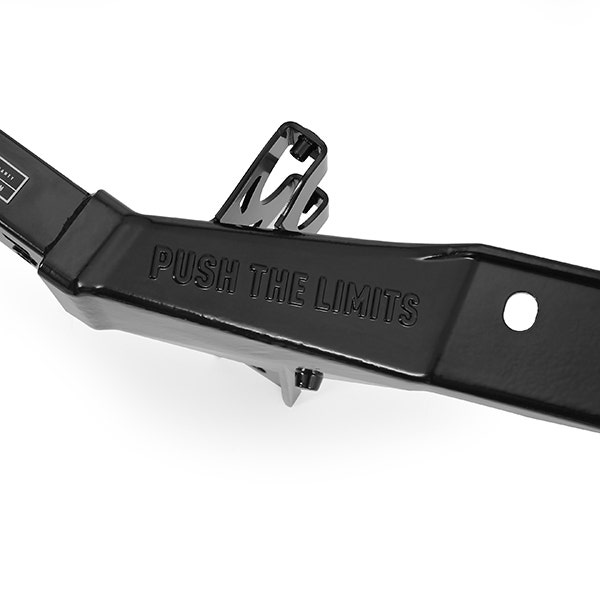
Up Next"
Next time, we'll take a peek at how this thing looks installed on a few different trucks, and we'll spend some time learning a bit more about how the R&D process worked for this upgrade.
So now that you've seen our upper support bar, I'm excited to say that you don't have to wait long at all to order this one. To start 2017 off with a bang, we are launching the pre-sale on this part soon. And by soon, I mean tomorrow!
Check back tomorrow for a link to order this 6.4L Powerstroke upper radiator support bar at a special, limited-time only discounted price.
UPDATE: It's Friday the 13th, which apparently is your lucky day - the pre-sale has begun!




